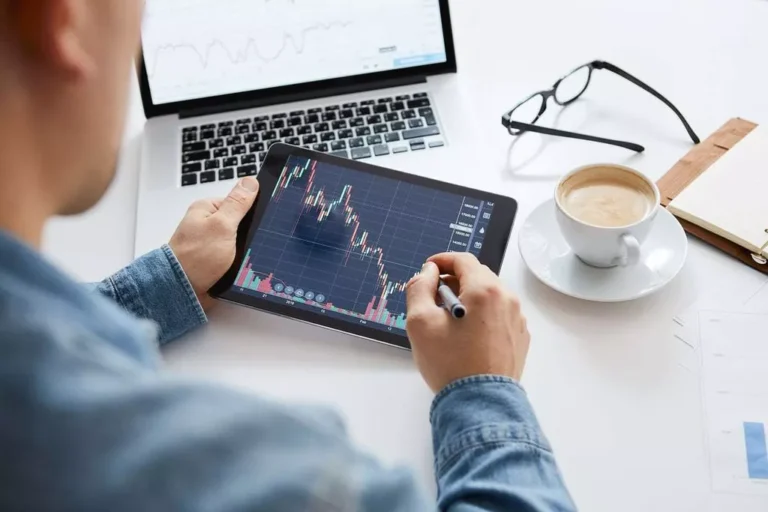Content
Also, ETPs don’t impose minimum investment capital limits or early redemption charges. Additionally, differences in the bid and ask—the buy and sell—price could add to the cost of trading ETPs. Some no-load or no-fee mutual funds, on the other hand, can be bought and sold without any trading commission. Today, along with offering replication of a stock index, ETPs Ethereum also allow investors to diversify their investments by providing exposure to asset classes that were historically difficult to reach.
What is an Exchange-Traded Product (ETP)?
Some ETNs may be called at the issuer’s discretion, meaning they can be subject to early redemption or an accelerated maturity date. This could lead to a loss if the value of the ETN when called is less than the market price you paid. Other ETPs may be liquidated for various reasons as well, which in some cases can etp vs etf occur with little warning. Historically, the vast majority of ETP activity has occurred in the secondary market, which is where most retail investor trades occur. Upgrading to a paid membership gives you access to our extensive collection of plug-and-play Templates designed to power your performance—as well as CFI’s full course catalog and accredited Certification Programs.
What are the Expert Screening Strategies?
The fund is then structured, listed and traded like a stock on the exchange. Join TIOmarkets, a top-rated forex broker, and expand your trading horizons. https://www.xcritical.com/ With over 170,000 accounts opened across more than 170 countries, we provide you with the tools to trade over 300 instruments across 5 markets, all with low fees. Enhance your skills with our comprehensive educational resources and step-by-step guides. Take the first step towards diversifying your portfolio by creating a Trading Account today and unlock the potential of ETPs. Long-term investors seeking to build a diversified portfolio with ETFs should consider specific criteria to align their investment choices with their financial goals and risk tolerance.
Investing in Leveraged and Inverse ETPs
Index options make it possible for investors to seek either profit or protection from price movements in a market as a whole or in broad segments of a particular market. ETPs carry a lot of risk and the potential rewards don’t balance that out. Sure, it can be enticing to invest in stuff like gold bars and get access to indexes you couldn’t get to before—but you’ll stay more interested and involved in an investment that you can understand. Stay informed on key industry, exchange and regulatory developments that impact issuers and ETF investors.
- You will pay this commission in addition to the cost of the ETP you choose to buy or sell.
- Both ETPs and ETFs can serve a valuable role in asset allocation when they match an investor’s strategy, goals, and risk tolerance.
- Previously, at AG Edwards, I led our New FA Training program at a time when the firm trained 1,000+ new FAs annually and had the highest-first year production in firm history.
- Exchange-traded products are financial instruments traded on stock exchanges that provide investors with exposure to diverse asset classes such as stocks, bonds, commodities, and currencies.
- ETPs include other securities beyond ETFs, such as exchange-traded notes (ETNs) and exchange-traded commodities (ETCs).
- All three types of ETPs—the exchange-traded fund (ETF), exchange-traded commodities (ETC) and exchange-traded notes (ETN)—function in similar ways, but they tend to be specialized based on product type and index groups.
- However, not everyone in the financial industry uses the term ETP consistently.
These are the operating principles I rely on when I work to develop an investment approach that is designed to meet my clients’ financial goals and objectives. I have been in the financial services industry since 1982 and have personal experience across multiple firms and varying market conditions. These are the operating principles I rely on when I coach advisors or when I work to develop an investment approach that is designed to meet my clients’ financial goals and objectives. These ongoing fees and expenses are typically charged annually as a percentage of your assets. You pay these fees and expenses indirectly because they are deducted from your assets on an ongoing basis.
ETPs are investment funds that are listed for trading on a national securities exchange and can be bought and sold in the equity trading markets. Exchange traded products include but are not limited to exchange traded funds (ETFs) and exchange traded notes (ETNs). ETPs provide investors with a way to diversify their portfolios across a wide range of asset classes, sectors, and investment strategies. ETPs are also highly flexible, allowing investors to buy and sell their shares throughout the trading day at market prices.
This can impact your ability to buy or sell the ETP at your desired price. Checking the trading volume and market depth of an ETP can provide insights into its liquidity. Like mutual funds, ETFs are regulated under the Investment Company Act of 1940, with additional rules tailored explicitly to ETFs.
Mutual funds are typically priced at the end of the trading day when orders are actually filled. For example, an investor can place a buy or sell order for an ETF share at a specific price with a broker or buy the ETF in the morning and sell it by the end of the day. Mutual funds can be purchased and sold during the day but are not priced until the market closes.
ETFs are a subset of ETPs regulated by the SEC under the 1940 Investment Company Act, while ETPs can fall under further regulations depending on their assets. Investors should weigh factors like expenses, tracking ability, liquidity, diversification, and risks when choosing between ETPs and ETFs. For example, a total stock market ETF would hold hundreds or even thousands of different stocks in proportion to their weight in a broad stock market index. By buying a share of the ETF, an investor instantly gains diversified exposure to the returns of the entire equity market rather than buying each stock separately. The first ETP is thought to be the Standard & Poor’s Depositary Receipts (SPDRs), commonly known as “Spiders.” The first SPDR was introduced in 1993 and is now known by its ticker symbol, SPY. This product was designed to track the S&P 500 Index, allowing investors to buy shares in a portfolio that mirrors the performance of the S&P 500.
Behind every blog post lies the combined experience of the people working at TIOmarkets. We are a team of dedicated industry professionals and financial markets enthusiasts committed to providing you with trading education and financial markets commentary. Our goal is to help empower you with the knowledge you need to trade in the markets effectively.
In January 2024, the Securities and Exchange Commission approved the first Bitcoin Spot ETFs, allowing fund managers to hold Bitcoin and offer exchange-traded shares to investors on official exchanges. Unlike some investment instruments, exchange-traded products are released regularly. An exchange-traded product seeks to provide the same yield as the underlying index or asset, providing a diversified investment in a single transaction. And the exciting, day-trading aspect of ETPs—knowing that you can buy and sell anytime the index is spiking—that’s not the way to build long-term wealth! Long-haul, ride-out-the-waves investing over time is the kind of solid investing strategy you need, and a financial advisor worth his salt is going to say the same thing. Depending on who you’re talking to, investing in exchange-traded products could be the best thing since the Cardinals took the World Series in 2011—legendary, by the way.
An ETF enters into contracts with financial institutions (typically large broker-dealers) to act as “authorized participants” (APs). APs purchase and redeem shares directly with the ETF in the primary market in large blocks of shares called creation units. APs typically sell some or all of their ETF shares in the secondary market, on an exchange. This enables investors to buy and sell ETF shares like the shares of any publicly traded company.
The benefits of the ETF wrapper are now available to issuers without the requirement to disclose portfolio holdings on a daily basis. The NYSE has the resources needed to support issuers as they navigate development. Fidelity® Sector Portfolio Builder is an educational tool that you can use to model a hypothetical portfolio using a variety of sector allocations. This tool should not be used as the primary basis of your investment decisions. Learn more about the features and risks of ETFs and ETPs at ETF/ETP Education. You can also visit the Fidelity Learning Center to get training and opinions from industry experts.

